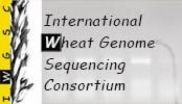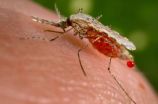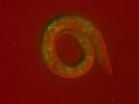(Press-News.org) Go ahead and call Rachel Dutton's research cheesy if you must. As far as she's concerned, it's anything but an insult.
A Bauer Fellow at the Faculty of Arts and Sciences' Center for Systems Biology, Dutton and her lab study cheese – or more precisely – the bacteria and fungi that live on cheese, in an effort to better understand how microbial communities form.
After studying 137 varieties of cheese collected in 10 different countries, Dutton has been able to identify three general types of microbial communities that live on cheese, opening the door to using each as a "model" community for the study of whether and how various microbes and fungi compete or cooperate as they form communities, what molecules may be involved in the process and what mechanisms may be involved. The study is described in a July 17 paper in Cell.
"We often use model organisms like E. coli or C. elegans because they can give us an understanding of the basic mechanisms and principles of how biology works," Dutton said. "The goal of this work was to identify something like a model organism, but for microbial communities – something we can bring into the lab and easily replicate and manipulate.
"The challenge in studying these communities is that many of the environments where they are found, such as the human body or the soil, are hard to replicate because they're so complicated," she continued. "Cheese seemed to offer a system…in which we knew exactly what these communities were growing on, so we thought we should be able to replicate that environment in the lab."
To understand what a model community might look like, Dutton and her lab first set out to identify dozens of naturally-occurring communities by collecting samples from the rinds of dozens of varieties of cheese around the world.
"We did some travelling in Europe and worked directly with a number of cheese-makers by having them send us samples or vising to collect samples, and in some cases we were able to collect samples from places like Formaggio Kitchen and other cheese shops," she said.
By sequencing those samples, Dutton was able to identify the type of bacteria and fungi in each, and found that while there was wide variation among different samples, the samples could be separated into one of three main types of communities.
"What we ended up finding is there are microbes which occur in all the areas where cheese is made," she said. "What was interesting is if you make the same type of cheese in France or in Vermont, they will have very similar communities. What seems to be driving the type of community you find is the environment that the cheese-maker creates on the surface of the cheese, so you can make two cheeses that are very similar in two different places, or you can make two very different cheeses in the same place."
Working in the lab, Dutton and colleagues were able to isolate each species of microbe and fungi found in the samples and conduct tests aimed at reproducing the communities found on different cheeses. "In many environments, it is challenging to isolate all of the microbes, so we were surprised to find that we could culture all of the species present on cheese rinds. This gives us a great foundation for being able to study communities in the lab," says Julie Button, a postdoctoral researcher in the Dutton lab.
"If we know a particular cheese has certain species, we can mix them together and try to recreate that community in the lab," Dutton said. "For example, we might try to simply put those species together at the same time in equal amounts to see if the community that forms is similar to that found in the sample."
The study was also aimed at understanding how various species of bacteria and fungi interact, and identified several instances in which certain bacteria halted fungal growth, and vice versa.
"We are now working with chemists to characterize what the molecules are that different bacteria might use to kill a fungus," Dutton said. "It's also possible that there may be anti-microbials that may arise from this that are normally at play during the formation of a community."
While wider applications for understanding how bacterial communities form may eventually emerge, Dutton said there are still a number of fundamental questions to answer in the short term.
"There are so many wide open questions in thinking about how microbial communities work, that future research could go in a number of different directions," she said. "Our goal is to understand some of these fundamental questions, such as: Are there certain principles that are operating as a community forms, and can we control those factors in the lab?
"Cheese is fascinating to me in its own right – it's somewhat surprising that, for a food that we've been eating for thousands of years, we don't have a complete understanding of the microorganisms that are present in this food."
But now that Dutton has that understanding, does she still eat cheese?
"I do," she said with a laugh. "But I'm very picky, because I like very good cheese now."
INFORMATION:
Choosing cheese
Researchers study cheese to unlock secrets of how microbial communities form
2014-07-17
ELSE PRESS RELEASES FROM THIS DATE:
Future electronics may depend on lasers, not quartz
2014-07-17
Nearly all electronics require devices called oscillators that create precise frequencies—frequencies used to keep time in wristwatches or to transmit reliable signals to radios. For nearly 100 years, these oscillators have relied upon quartz crystals to provide a frequency reference, much like a tuning fork is used as a reference to tune a piano. However, future high-end navigation systems, radar systems, and even possibly tomorrow's consumer electronics will require references beyond the performance of quartz.
Now, researchers in the laboratory of Kerry Vahala, the ...
Exploiting gastric vulnerability
2014-07-17
Helicobacter pylori infection promotes stomach ulcers and cancer. How H. pylori initially interacts with and irritates gastric tissue is not well understood. An article published on July 17th in PLOS Pathogens now describes that H. pylori rapidly identifies and colonizes sites of minor injuries in the stomach, almost immediately interferes with healing at those injury sites, and so promotes sustained gastric damage.
Smoking, alcohol, excessive salt intake, and non-steroidal anti-inflammatory drugs cause damage to the tissue lining the stomach, and are associated with ...
Genetic blueprint of bread wheat genome unveiled
2014-07-17
This news release is available in French, Japanese, and German.
The genetic blueprint is an invaluable resource to plant science researchers and breeders. For the first time, they have at their disposal a set of tools enabling them to rapidly locate specific genes on individual wheat chromosomes throughout the genome. Jorge Dubcovsky, Professor at the University of California Davis, USA, says that these results "have been a fantastic resource for our laboratory. The development of genome specific primers, which used to take several weeks of work, can now be done ...
New study shows how existing cropland could feed billions more
2014-07-17
MINNEAPOLIS / ST. PAUL (July 18, 2014) Feeding a growing human population without increasing stresses on Earth's strained land and water resources may seem like an impossible challenge. But according to a new report by researchers at the University of Minnesota's Institute on the Environment, focusing efforts to improve food systems on a few specific regions, crops and actions could make it possible to both meet the basic needs of 3 billion more people and decrease agriculture's environmental footprint.
The report, published today in Science, focuses on 17 key crops ...
New potential way to control spread of insect-borne disease
2014-07-17
A cross-disciplinary team is calling for public discussion about a potential new way to solve longstanding global ecological problems by using an emerging technology called "gene drives." The advance could potentially lead to powerful new ways of combating malaria and other insect-borne diseases, controlling invasive species and promoting sustainable agriculture.
Representing the Wyss Institute for Biologically Inspired Engineering at Harvard University, Harvard Medical School, Harvard School of Public Health, the Massachusetts Institute of Technology (MIT), Boston University, ...
In development, it's all about the timing
2014-07-17
Cold Spring Harbor, NY – Closely related organisms share most of their genes, but these similarities belie major differences in behavior, intelligence, and physical appearance. For example, we share nearly 99% of our genes with chimps, our closest relatives on the great "tree of life." Still, the differences between the two species are unmistakable. If not just genes, what else accounts for the disparities? Scientists are beginning to appreciate that the timing of the events that happen during development plays a decisive role in defining an organism, which may help to ...
Viral relics show cancer's 'footprint' on our evolution
2014-07-17
Viral relics show cancer’s ‘footprint’ on our evolution Cancer has left its ‘footprint’ on our evolution, according to a study which examined how the relics of ancient viruses are preserved in the genomes of 38 mammal species.
Viral relics are evidence of the ancient battles our genes have fought against infection. Occasionally the retroviruses that infect an animal get incorporated into that animal’s genome and sometimes these relics get passed down from generation to generation – termed ‘endogenous retroviruses’ (ERVs). Because ERVs may be copied to other parts of the ...
When is a molecule a molecule?
2014-07-17
Using ultra-short X-ray flashes, an international team of researchers watched electrons jumping between the fragments of exploding molecules. The study reveals up to what distance a charge transfer between the two molecular fragments can occur, marking the limit of the molecular regime. The technique used can show the dynamics of charge transfer in a wide range of molecular systems, as the scientists around Dr. Benjamin Erk and Dr. Daniel Rolles of DESY and Professor Artem Rudenko of Kansas State University report in the scientific journal Science. Such mechanisms play ...
Pitt-led study suggests cystic fibrosis is 2 diseases, 1 doesn't affect lungs
2014-07-17
PITTSBURGH, July 17, 2014 – Cystic fibrosis (CF) could be considered two diseases, one that affects multiple organs including the lungs, and one that doesn't affect the lungs at all, according to a multicenter team led by researchers at the University of Pittsburgh School of Medicine. The research, published online today in PLOS Genetics, showed that nine variants in the gene associated with cystic fibrosis can lead to pancreatitis, sinusitis and male infertility, but leave the lungs unharmed.
People with CF inherit from each parent a severely mutated copy of a gene ...
Scientists find protein-building enzymes have metamorphosed & evolved new functions
2014-07-17
LA JOLLA, CA AND JUPITER, FL—Scientists at The Scripps Research Institute (TSRI) and Hong Kong University of Science and Technology (HKUST) and their collaborators have found that ancient enzymes, known for their fundamental role in translating genetic information into proteins, evolved myriad other functions in humans. The surprising discovery highlights an intriguing oddity of protein evolution as well as a potentially valuable new class of therapeutic proteins and therapeutic targets.
"These new protein variants represent a previously unrecognized layer of biology—the ...
LAST 30 PRESS RELEASES:
Numbers in our sights affect how we perceive space
SIMJ announces global collaborative book project in commemoration of its 75th anniversary
Air pollution exposure and birth weight
Obstructive sleep apnea risk and mental health conditions among older adults
How talking slows eye movements behind the wheel
The Ceramic Society of Japan’s Oxoate Ceramics Research Association launches new international book project
Heart-brain connection: international study reveals the role of the vagus nerve in keeping the heart young
Researchers identify Rb1 as a predictive biomarker for a new therapeutic strategy in some breast cancers
Survey reveals ethical gaps slowing AI adoption in pediatric surgery
Stimulant ADHD medications work differently than thought
AI overestimates how smart people are, according to HSE economists
HSE researchers create genome-wide map of quadruplexes
Scientists boost cell "powerhouses" to burn more calories
Automatic label checking: The missing step in making reliable medical AI
Low daily alcohol intake linked to 50% heightened mouth cancer risk in India
American Meteorological Society announces Rick Spinrad as 2026 President-Elect
Biomass-based carbon capture spotlighted in newly released global climate webinar recording
Illuminating invisible nano pollutants: advanced bioimaging tracks the full journey of emerging nanoscale contaminants in living systems
How does age affect recovery from spinal cord injury?
Novel AI tool offers prognosis for patients with head and neck cancer
Fathers’ microplastic exposure tied to their children’s metabolic problems
Research validates laboratory model for studying high-grade serous ovarian cancer
SIR 2026 delivers transformative breakthroughs in minimally invasive medicine to improve patient care
Stem Cell Reports most downloaded papers of 2025 highlight the breadth and impact of stem cell research
Oxford-led study estimates NHS spends around 3% of its primary and secondary care budget on the health impacts of heat and cold in England
A researcher’s long quest leads to a smart composite breakthrough
Urban wild bees act as “microbial sensors” of city health.
New study finds where you live affects recovery after a hip fracture
Forecasting the impact of fully automated vehicle adoption on US road traffic injuries
Alcohol-related hospitalizations from 2016 to 2022
[Press-News.org] Choosing cheeseResearchers study cheese to unlock secrets of how microbial communities form



